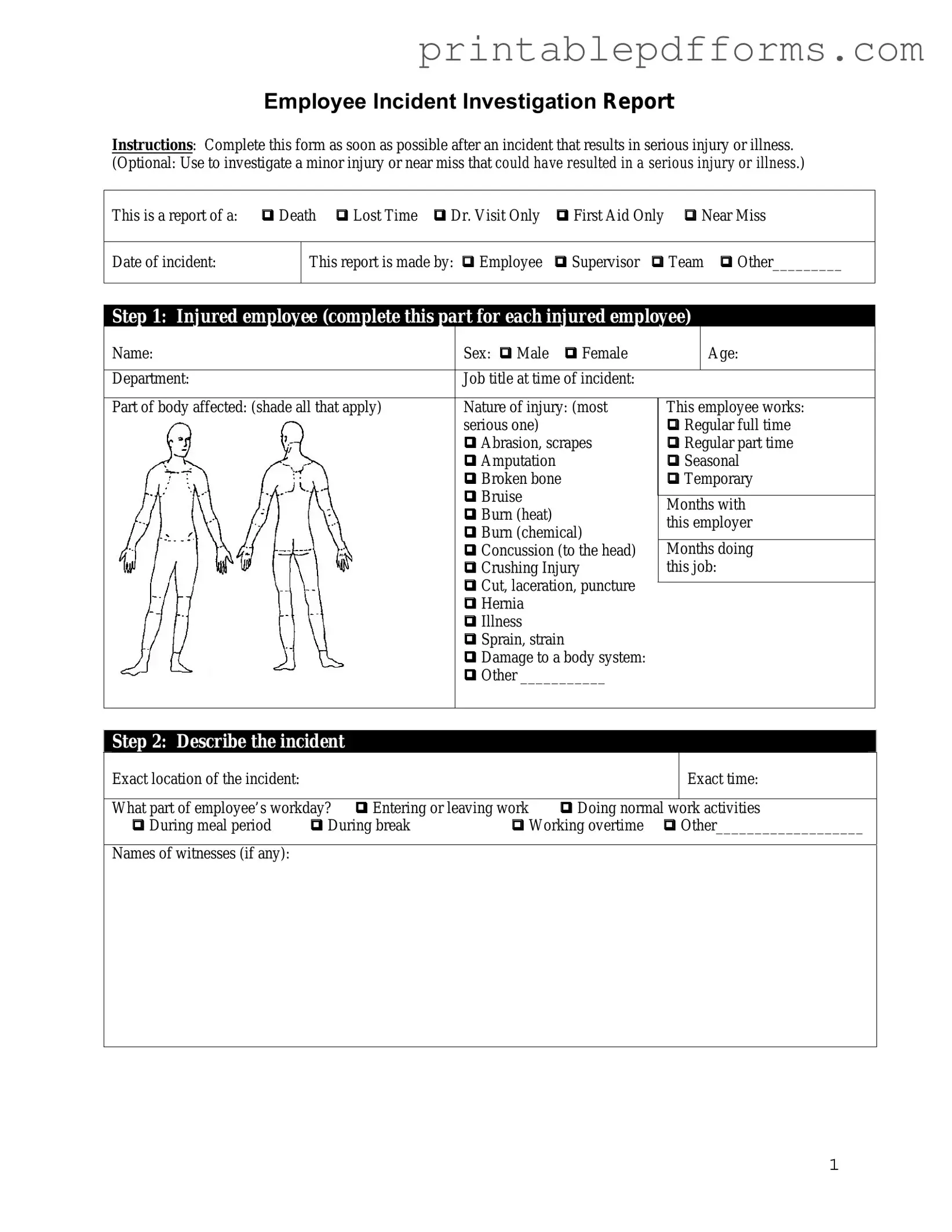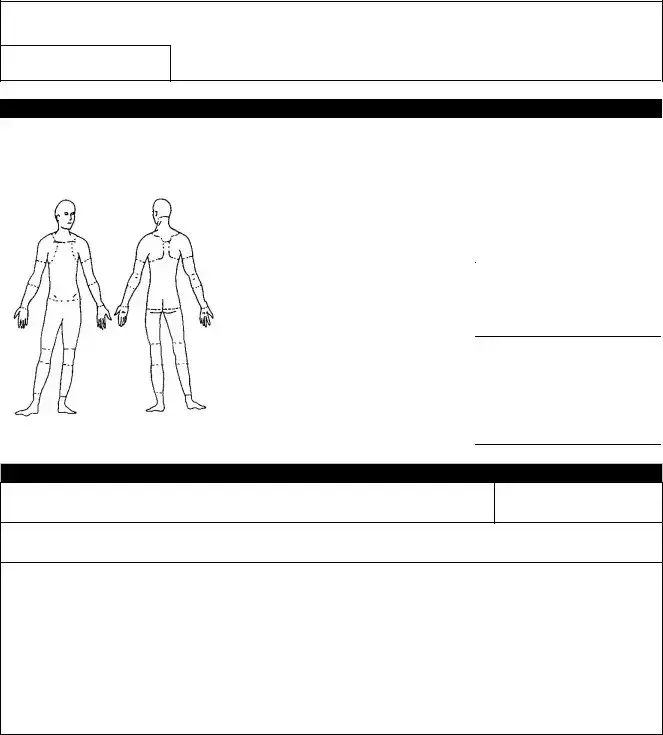The Employee Accident Report form is a document used to record details of any accidents or injuries that occur in the workplace. It serves as a formal record that helps employers understand the circumstances surrounding the incident, assess risks, and implement necessary safety measures.
Typically, the employee involved in the accident should complete the form. However, if the employee is unable to do so due to their injuries, a supervisor or designated representative may fill it out on their behalf. It is important that the report accurately reflects the facts of the incident.
The form should be completed as soon as possible after the accident occurs. Timeliness is crucial for gathering accurate details while the incident is fresh in everyone's mind. Most organizations require the report to be submitted within a specific timeframe, often within 24 to 48 hours after the event.
The Employee Accident Report form usually includes the following information:
-
Date and time of the accident
-
Location of the incident
-
Names and contact information of those involved
-
A detailed description of what happened
-
Witness statements, if applicable
-
Nature of the injuries sustained
-
Any immediate actions taken, such as first aid
Why is it important to report an accident?
Reporting an accident is crucial for several reasons. First, it helps ensure that employees receive appropriate medical care. Second, it allows employers to investigate the incident, identify hazards, and improve workplace safety. Lastly, documentation can protect both the employee and the employer in case of future disputes or claims.
Once the form is submitted, it typically goes to a designated safety officer or human resources representative. They will review the report, investigate the incident further if necessary, and determine if additional measures are needed to prevent future occurrences. Employees may also be informed of any findings or changes made as a result of the investigation.
Yes, submitting the Employee Accident Report form can have legal implications. It serves as an official record that may be referenced in case of workers' compensation claims or legal disputes. Therefore, it is essential to provide accurate and honest information in the report. Misrepresenting facts could lead to complications for both the employee and the employer.
Can I request a copy of the report?
Yes, employees have the right to request a copy of the Employee Accident Report form. This can be useful for personal records or if further action, such as a workers' compensation claim, is necessary. It is advisable to check with your employer’s policy on obtaining copies of such documents.
If you disagree with the information recorded in the Employee Accident Report, it is important to address your concerns promptly. You can discuss your objections with your supervisor or the individual responsible for compiling the report. Many organizations allow employees to submit a written statement to clarify their perspective on the incident.



